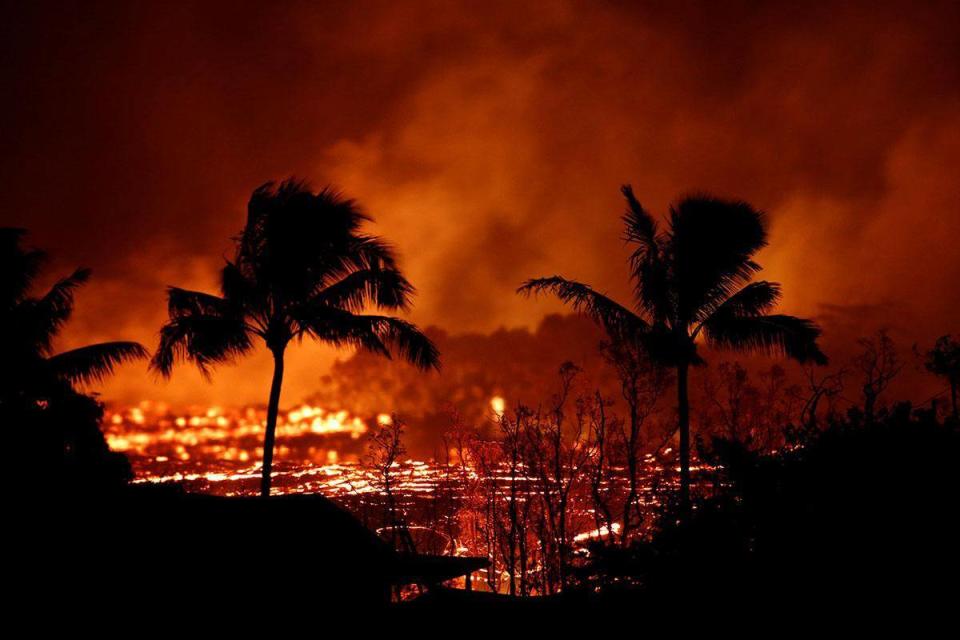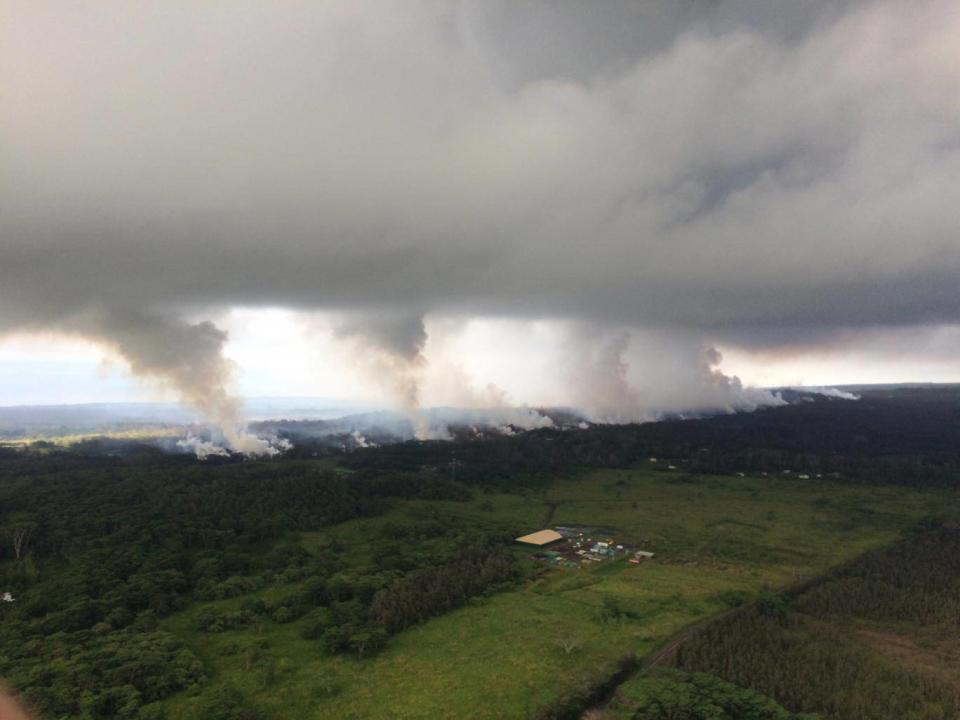Hawaii volcano eruption: Is this the beginning - or the end?
Lava flows and a series of earthquakes, have now been followed by large clouds of toxic fumes and tiny glass-like particles known as "laze", from Hawaii's erupting volcano, Kilauea.
Authorities warned the public to stay away from the caustic plumes, caused by a chemical reaction when lava poured into the Pacific ocean.
Lava has also continued to gush out of large cracks in the ground in residential neighbourhoods, while two explosive eruptions unleashed clouds of ash from the volcano's summit.
The rate of sulphur dioxide gas being emitted from large cracks in the ground in these areas has also tripled, leading the county of Hawaii to repeat warnings about air quality.
Here The Independent looks at the volcano's activity.
When did Kilauea first erupt?
The volcano has been in constant eruption for the last 35 years. It is one of the most active of the five volcanoes on Hawaii’s Big Island.
It typically blows off basaltic lava which flows into the ocean, but has occasionally unleashed more explosive and damaging eruptions.
Earlier this month, the island was shaken by a 6.9 magnitude earthquake, the strongest it had seen since 1975.
What damage has it caused so far?
Around 2,000 people have been evacuated from their homes after Kilauea started spewing lava into residential areas and a series of earthquakes shook the island.
So far, 22 fissures have opened up and around 40 structures, including two dozen homes, have been burned.
One man was injured when he was struck in the leg by a flying piece of lava.
“It hit him on the shin and shattered everything there down on his leg," said a spokesperson for the county’s mayor.
The volcano’s summit has also emitted a periodic eruption of ash, volcanic rock and toxic gases.
Laze, a term combining the words “lava” and “haze,” is a mix of hydrochloric acid fumes, steam and fine volcanic glass specks.
It is created when erupting lava, which can reach temperatures exceeding 1,000C, reacts with seawater. Potential hazards include lung damage, as well as eye and skin irritation.
The eruption has also fed a phenomenon called “vog,” a hazy mix of sulphur dioxide, aerosols, moisture and dust, with fine particles which can travel deep into the lungs, the USGS said.
Have we seen the worst of the eruption?

Those who were forced to evacuate from their homes may not be able to return for some time, scientists have warned.
Further eruptions and earthquakes have been forecast, perhaps for “weeks or months” to come.

Officials at the Hawaii Volcano Authority have warned hotter and more viscous lava could be on the way, with fountains spurting as high as 600ft (182m) into the air, as seen in an eruption in 1955.
However, tourism officials on the islands have said there is no reason for visitors to change their plans for booked trips.
The Hawaii Tourism Agency said only Big Island, or Hawai’i, is affected by the fallout from Kilauea.
Does it still pose a danger to residents, are further evacuations necessary?

A small eruption occurred at Kilaueau’s summit earlier this week, producing an ash plume which reached around 7,000ft (2,134m).
Wind carried the ash plume to the southwest, officials said, towards the communities of Wood Valley, Pahala, Naalehu and Waiohinu.
Lava flows from Kilauea have poured across major roads, cutting off evacuation routes. With Highway 137 severed, authorities have been trying to open up the nearby Highway 11, which was blocked by almost a mile of lava in 2014, to serve as an alternative escape route.
The Hawaii National Guard has warned further mandatory evacuations may be necessary if more roads become blocked.

 Yahoo News
Yahoo News 
